Search Images
Browse Content (p. 1650)
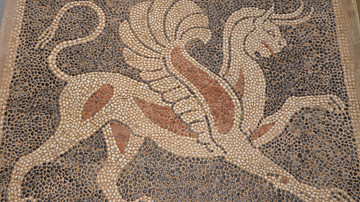
Image
Griffin Pebble Mosaic
Pebble mosaic floor depicting a griffin, from ancient Sikyon (Greece), second half of 4th century BCE.
Archaeological Museum of Sikyon.
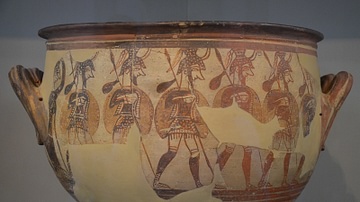
Image
Mycenaean Krater With Warriors
Large Mycenaean krater depicting men in full armour (helmet, cuirass, greaves, shield and spear) as they depart for war, a sack of supplies hanging from their spears. To the side a woman raises her hand in a farewell gesture. From the "House...
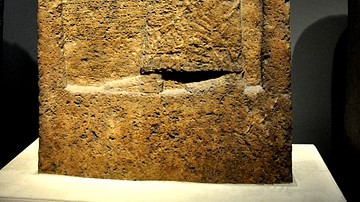
Image
Ashurnasirpal II's Stela from Kurkh
The Assyrian King Ashurnasirpal II worships in front of god symbols. The cuneiform inscription describes his military campaign in the year 879 BCE, when the Assyrian army attacked the lands of the upper Tigris River, near Diyarbakir (modern...
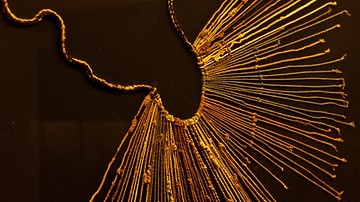
Image
Khipu
Khipu (quipu) or record-knots were used by ancient Andean cultures such as the Inca in order to record and transfer information and records. (Museum of Colchagua, Santa Cruz, Chile)
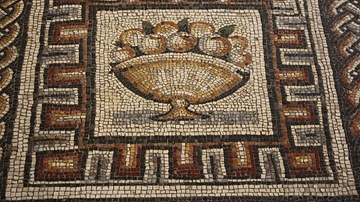
Image
Fruit, Roman Mosaic
A Roman floor mosaic dating to between 350 and 375 CE and depicting fruit. Food was a popular subject in mosaics throughout the Roman period. Provenance: Toragnola, Rome. (Vatican Museums, Rome).
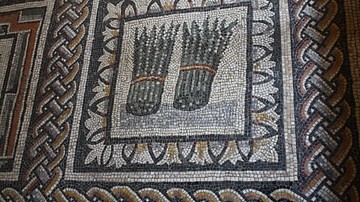
Image
Asparagus, Roman Mosaic
A Roman floor mosaic dating to between 350 and 375 CE and depicting asparagus. Food was a popular subject in mosaics throughout the Roman period. Provenance: Toragnola, Rome. (Vatican Museums, Rome).
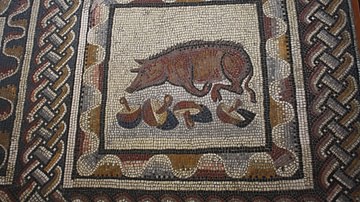
Image
Wild Boar, Roman Mosaic
A Roman floor mosaic dating to between 350 and 375 CE and depicting a wild boar and mushrooms. Food was a popular subject in mosaics throughout the Roman period. Provenance: Toragnola, Rome. (Vatican Museums, Rome).
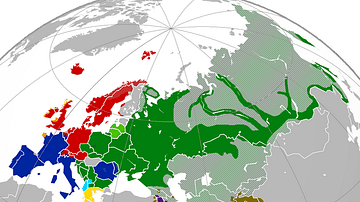
Image
Indo-European Language Family
Approximate geographical distribution of the Indo-European language family today in Eurasia.
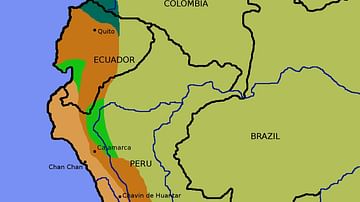
Image
Map of the inca Empire
A map showing the various stages of expansion of the Inca empire.
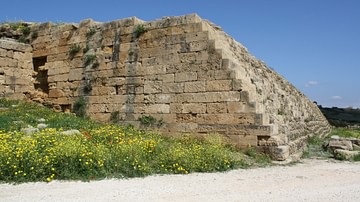
Image
Fortifications, Selinus
Part of the impressive 5th to 3rd century BCE fortification wall of Selinus.